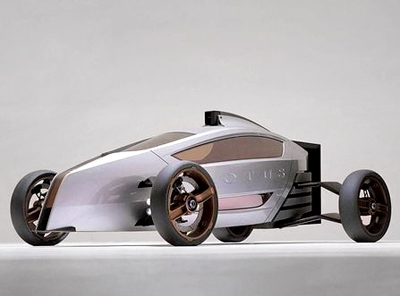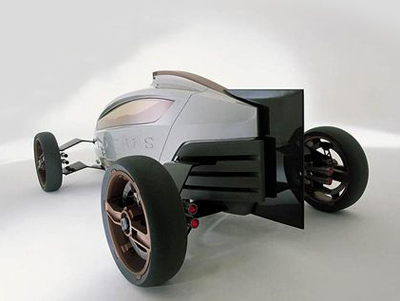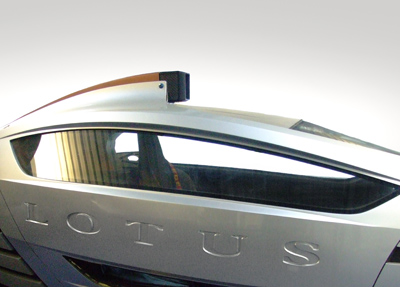Is 300mph far off?
Discussion
I think you will need a very slippery car. Perhaps with the passenger behind the driver, as in some of the concepts. Plus a silly engine of course. Or even electric with a short range!
For now, perhaps a veyron lump + this might work...



Or pop a diesel in there and get 300 mpg
For now, perhaps a veyron lump + this might work...



Or pop a diesel in there and get 300 mpg

Edited by k-ink on Friday 13th November 15:25
Patrick Bateman said:
I think so, if you look at the max speed over the years it's not increased a huge amount since the McLaren F1, 300mph is a long way off from the 250/260mph at this end of the spectrum.
The F1 hits close on 250mph with "only" 600 or so bhp. The Veyron gets to a slightly higher speed with over 50% more power.Its highly unlikely that we'll see a fully road legal car that can do those sorts of speeds. Something about emissions and the environment.
It is quite a long way off, in my opinion. Theres a far greater difference in force needed from going between 250-300mph than there is 200-250mph (ie what was recently achieved). most 500bhp cars will do 200mph, it takes 900+ mph to get an extra 50mph top speed. You're looking at 2000bhp+ to crack 300, along with it actually being able to put that power to the floor, and other logistical problems. And you have to have a fuel tank big enough for it to go long enough for it to reach 300mph. It isn't going to get to 300mph quickly, and I don't remember how quickly a Veyron drinks fuel at 250mph, but a 2000bhp car is going to be drinking it faster and it's still going to have that massive last stint to push through in a limited amount of time.
I don't think we'll see a 300mph road legal car for another 15 years.
I don't think we'll see a 300mph road legal car for another 15 years.
Just to mention something quickly in the OP's post - bhp/tonne doesn't matter with regard to top speed, it's purely power vs drag (aero and mechanicaly). Aero drag goes up with the square of speed, so things get very difficult indeed the faster you go. The Keating's 260mph is a huge achievement compared with the Veyron's 250mph (if that's all it would do on a salt flat if Bugatti were to take one there...).
clonmult said:
Its highly unlikely that we'll see a fully road legal car that can do those sorts of speeds. Something about emissions and the environment.
More to do with resistance than anything. The extra power required to get the same shaped car from 250MPH to 300MPH is more than just adding another few hundred BHP and some fancy wings...bazking69 said:
clonmult said:
Its highly unlikely that we'll see a fully road legal car that can do those sorts of speeds. Something about emissions and the environment.
More to do with resistance than anything. The extra power required to get the same shaped car from 250MPH to 300MPH is more than just adding another few hundred BHP and some fancy wings...Technically its totally possible, but who would do it? VW (via Bugatti or Lambo) or Ferrari are possibile, with the former more so than the latter, but I don't think that any of the larger companies capable would be willing to do it.
article said:
300 mph: The Aerodynamics of Drag and Power
Aviation people distinguish air resistance as parasitic and induced drag, but the critical thing to understand is that drag increases as the square of speed. That is, while power increases in a linear fashion, drag increases exponentially with speed, in a parabolic function. For example (neglecting the effect of rolling resistance), if 100 horsepower would push a certain vehicle 100 miles per hour through the air, doubling the speed to 200 would require two-squared or 400 horsepower to overcome air resistance, while 300 miles per hour would require 900 horsepower.
Components of the following formulae which can be used to compute power required to achieve a certain speed in a vehicle:
Power = 8.702 x 10**(-6) x Cd x A x V**3
where Cd = coefficient of drag (look it up for your vehicle)
A = square feet of frontal area of the vehicle
V = Velocity, in miles per hour
The 8.702 x 10**(-6) section of the equation is a slightly-fudged correction factor made up by me to account for air density, gravity, rolling resistance, etc. Bell uses 6.7 x 10**(-6) x Cd x A x mph**3 and adjusts for actual rolling resistance, where
Rolling Power = 4.0 x 10**(-5) x weight x mph
Cd is adjusted to include rolling resistance (a relatively flat function), and air density is assumed to be standard Temp. and pressure at sea level. Intuitively, power required to achieve a certain speed is dependent on how good a shape the vehicle has (coefficient of drag), how big the shape is (frontal area), and how dense the air is.
Working through an example, Bill Gordon’s Norwood Autocraft 8.2L 288-GTO 308 conversion, assuming a Cd of .33, a frontal area of 20.5 square feet, and assuming a target speed is 200 mph. Therefore,
Required Power = (8.702 x 10**(-6) x.33 x 20.5 x 200**3
Required Power = 0.000008702 x .33 x 20.5 x 8,000,000
Required Power = 472
Observed results when Norwood was running the car with a super-high-output naturally-aspirated 302-inch Chevrolet small-block engine were that the estimated 550-600 plus crankshaft horsepower took the car to 199 mph. Norwood says experience indicates it takes almost 600 crankshaft horsepower to break 200mph, a rule of thumb born-out yet again when a Norwood Toyota MR2-turbo set a record in the 1.5-liter blown modified sports class after it attained 207 mph on 465 chassis dyno rear-wheel horsepower, an estimated 585 at the crank.
Another formula computes power required to increase to a new higher speed:
New Required Power = Old Power (New Speed/Old Speed)**3, where Old Power is total available rear-wheel power.
For the 288-GTO to attain 300 miles per hour,
New Power = 472 x (300/200)**3
New Power = 1593
In another example, lets consider the same car with the frontal area reduced by decreasing the height by one inch (which can often effectively be achieved by lowering the car). In round numbers, assume frontal area is decreased by .5 square feet. This reduces power required to break 200 in the GTO to 460 at the wheels, meaning crankshaft horsepower required to break 300 is reduced by about 55.
Lowering the entire car has a direct effect on the frontal area multiplier, and is why you see speed record cars virtually scraping the ground. Lowering the GTO even one inch reduces frontal area roughly .5 square feet, reducing the frontal area multiplier to 20 square feet, which reduces required horsepower to hit 200 to 460, or 12 rwhp less. The point is, the effect of reducing drag pays far greater dividends on top speed than adding horsepower. It is standard practice to remove the side-view mirrors from “unmodified” cars before top speed runs.
The above equations assume that a vehicle’s the torque and power curves are optimized for the application—that is, that the powerplant is mated to a gearbox that enables the vehicle to be at or very near its peak power at the target potential top speed. Naturally, the vehicle's cooling system must keep up with thermal loading at wide open throttle long enough to reach the target speed, the tires must maintain their integrity, and so on.
Of course, most enthusiasts are more interested in road-racing-type performance than top speed, in which case the large down-forces needed to hold the car to the road on high-speed turns becomes essential and a necessary tradeoff against the added drag of the down-force wings. Good rear wings and frontal splitters and canards can add thousands of pounds of down-force at speeds over 100 mph, but they also add hugely to drag. You've heard it before, but there's no free lunch in aerodynamics either.
Talking around 2000bhp for a road car that can corner and have decent passenger area two abreast and not just drive in a straight line to get to 300mph Aviation people distinguish air resistance as parasitic and induced drag, but the critical thing to understand is that drag increases as the square of speed. That is, while power increases in a linear fashion, drag increases exponentially with speed, in a parabolic function. For example (neglecting the effect of rolling resistance), if 100 horsepower would push a certain vehicle 100 miles per hour through the air, doubling the speed to 200 would require two-squared or 400 horsepower to overcome air resistance, while 300 miles per hour would require 900 horsepower.
Components of the following formulae which can be used to compute power required to achieve a certain speed in a vehicle:
Power = 8.702 x 10**(-6) x Cd x A x V**3
where Cd = coefficient of drag (look it up for your vehicle)
A = square feet of frontal area of the vehicle
V = Velocity, in miles per hour
The 8.702 x 10**(-6) section of the equation is a slightly-fudged correction factor made up by me to account for air density, gravity, rolling resistance, etc. Bell uses 6.7 x 10**(-6) x Cd x A x mph**3 and adjusts for actual rolling resistance, where
Rolling Power = 4.0 x 10**(-5) x weight x mph
Cd is adjusted to include rolling resistance (a relatively flat function), and air density is assumed to be standard Temp. and pressure at sea level. Intuitively, power required to achieve a certain speed is dependent on how good a shape the vehicle has (coefficient of drag), how big the shape is (frontal area), and how dense the air is.
Working through an example, Bill Gordon’s Norwood Autocraft 8.2L 288-GTO 308 conversion, assuming a Cd of .33, a frontal area of 20.5 square feet, and assuming a target speed is 200 mph. Therefore,
Required Power = (8.702 x 10**(-6) x.33 x 20.5 x 200**3
Required Power = 0.000008702 x .33 x 20.5 x 8,000,000
Required Power = 472
Observed results when Norwood was running the car with a super-high-output naturally-aspirated 302-inch Chevrolet small-block engine were that the estimated 550-600 plus crankshaft horsepower took the car to 199 mph. Norwood says experience indicates it takes almost 600 crankshaft horsepower to break 200mph, a rule of thumb born-out yet again when a Norwood Toyota MR2-turbo set a record in the 1.5-liter blown modified sports class after it attained 207 mph on 465 chassis dyno rear-wheel horsepower, an estimated 585 at the crank.
Another formula computes power required to increase to a new higher speed:
New Required Power = Old Power (New Speed/Old Speed)**3, where Old Power is total available rear-wheel power.
For the 288-GTO to attain 300 miles per hour,
New Power = 472 x (300/200)**3
New Power = 1593
In another example, lets consider the same car with the frontal area reduced by decreasing the height by one inch (which can often effectively be achieved by lowering the car). In round numbers, assume frontal area is decreased by .5 square feet. This reduces power required to break 200 in the GTO to 460 at the wheels, meaning crankshaft horsepower required to break 300 is reduced by about 55.
Lowering the entire car has a direct effect on the frontal area multiplier, and is why you see speed record cars virtually scraping the ground. Lowering the GTO even one inch reduces frontal area roughly .5 square feet, reducing the frontal area multiplier to 20 square feet, which reduces required horsepower to hit 200 to 460, or 12 rwhp less. The point is, the effect of reducing drag pays far greater dividends on top speed than adding horsepower. It is standard practice to remove the side-view mirrors from “unmodified” cars before top speed runs.
The above equations assume that a vehicle’s the torque and power curves are optimized for the application—that is, that the powerplant is mated to a gearbox that enables the vehicle to be at or very near its peak power at the target potential top speed. Naturally, the vehicle's cooling system must keep up with thermal loading at wide open throttle long enough to reach the target speed, the tires must maintain their integrity, and so on.
Of course, most enthusiasts are more interested in road-racing-type performance than top speed, in which case the large down-forces needed to hold the car to the road on high-speed turns becomes essential and a necessary tradeoff against the added drag of the down-force wings. Good rear wings and frontal splitters and canards can add thousands of pounds of down-force at speeds over 100 mph, but they also add hugely to drag. You've heard it before, but there's no free lunch in aerodynamics either.
Edited by Crusoe on Friday 13th November 16:09
I asked the very same questing in the Keating Supercar thread 
If however you want something that looks like a car then if the veyron has 987 bhp and top speed of 250 and 987bhp then an extra 50mph is a 20% increase in speed so a rough guess would be 1.20 cubed (to take into account wind resistance increasing) so an extra 72% resulting in about 1700 bhp.

ads_green said:
peterattheboro said:
How long do you think it would be until 300mph is reached?
Is it doable for a petrol engine or will it be electric?
If it is petrol, what spec can we see from the engine; quad turbo V12 producing 3000bhp?
Petrol have already hit 400mph doing land speed records.Is it doable for a petrol engine or will it be electric?
If it is petrol, what spec can we see from the engine; quad turbo V12 producing 3000bhp?
If however you want something that looks like a car then if the veyron has 987 bhp and top speed of 250 and 987bhp then an extra 50mph is a 20% increase in speed so a rough guess would be 1.20 cubed (to take into account wind resistance increasing) so an extra 72% resulting in about 1700 bhp.
Gassing Station | General Gassing | Top of Page | What's New | My Stuff




